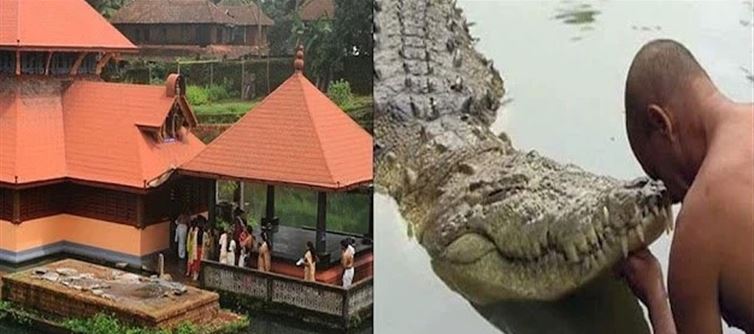
We're going to tell you about one such myth today, and after hearing it, you won't believe it. Although most animals are carnivorous—even large, dangerous creatures like crocodiles—there is one crocodile on the vegetarian planet. prasad is the only food consumed by this unusual crocodile on the globe.
Everyone is curious about this indian vegetarian crocodile. Let us tell you that this vegetarian crocodile resides in a pond that is located in the center of Kerala's well-known Padmanabhaswamy temple. The Padmanabhaswamy temple, dedicated to Lord Vishnu, is situated in the center of the temple's lake. Babia is the name of the crocodile that protects the temple.
It is said that when a crocodile dies in this lake, another one mysteriously emerges here. This temple is well-known for its crocodile, Babia. prasad is served to Babia after being offered in the temple, although only temple priests are permitted to do so. The Babia crocodile does not hurt other lake species and is a vegetarian.
What's the mystery?
For over 60 years, this crocodile has resided in the lake at the Anantapur temple. According to the locals, this crocodile was shot dead by the british in 1945, yet it reappeared as soon as the following day. Although it is unknown if this is the same crocodile or another, it is true that it is a vegetarian, which is extremely unusual in and of itself.
One of the wealthiest temples in india is the Padmanabhaswamy temple, a well-known kerala temple devoted to Lord Vishnu. According to legend, Lord vishnu is seated here in a form that he has shown himself in. The enormous statue of Lord vishnu sitting in a sleeping position draws thousands of devotees from all over the world. According to mythology, Lord Padmanabhaswamy was also worshipped at this temple by indra and Chandra. This temple has 12008 Shaligrams installed. The devotees are enthralled by this location, which reverberates with the sacred sounds of bells, conch blowing, and chants. This temple is often referred to as the 108th Vaishnava pilgrimage place.
According to some historians, this temple is 5,000 years old.
On the 950th day of the kali Yuga, Tulu Brahmin Diwakar muni founded this temple, according to the ancient literature Anantasyana Mahatmya, which was recorded on palm leaves. The temple has undergone multiple reconstructions. The Maharaja Martand varma of Travancore last constructed this temple in 1733 AD. The temple's majesty is enhanced by the golden pillar within and the exquisitely carved pillars in the hallway.




 click and follow Indiaherald WhatsApp channel
click and follow Indiaherald WhatsApp channel